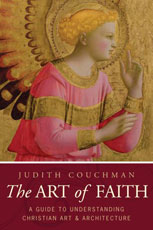"In Christian art animal forms have always occupied a place of far greater importance than was ever accorded to them in the art of the pagan world."
— The Catholic Encyclopedia
"In the Old Testament, when Job suffered at the hands of Satan, he referred to the innate spiritual knowledge implanted in animals. He implored his friend Zophar to recognize their wisdom: 'But ask the animals, and they will teach you, or the birds in the sky, and they will tell you; or speak to the earth, and it will teach you, or let the fish in the sea inform you. Which of all these does not know that the hand of the Lord has done this? In his hand is the life of every creature and the breath of all mankind' (Job 12:7-10).
"Christians integrated Job's assertion into their religious convictions, believing the animals and birds of sacred art conveyed messages for them. These insights resided in metaphors, biblical stories, moral lessons, and religious theology. Even more, Christians believed God purposely created some of the earth's creatures to represent his salvation story. For example, pelicans revived their dead offspring after three days, symbolizing Christ's resurrection, saving humanity from sin. Peridexion trees shielded doves from dragons, just as the church sheltered Christians from Satan. Dogs remained loyal to their owners, just as husbands and wives practiced fidelity. In this sense, all creation reflected the Creator, if Christians paused and observed. Sacred art encouraged them to appreciate and learn from God's creatures.
"Consequently, animals and birds populated Christian art. Although these creatures proliferated in illuminated manuscripts, they also appeared in jewelry, paintings, sculpture, tapestries, and other art forms. These works honored God's creatures, and his splendor in the earth, sky, and water."
